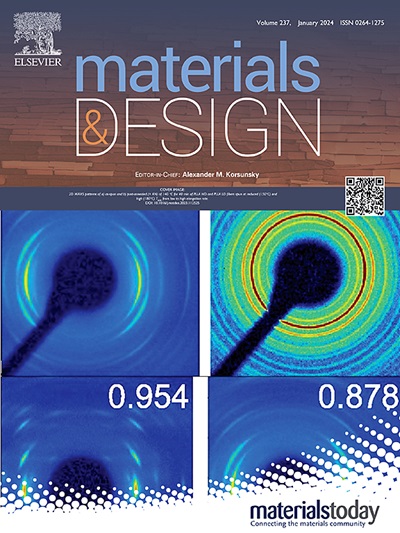Calibration and surrogate model-based sensitivity analysis of crystal plasticity finite element models
IF 7.6
2区 材料科学
Q1 MATERIALS SCIENCE, MULTIDISCIPLINARY
引用次数: 0
Abstract
Crystal plasticity models are powerful tools for predicting the deformation behaviour of polycrystalline materials accounting for underlying grain morphology and texture. These models typically have a large number of parameters, an understanding of which is required to effectively calibrate and apply the model. This study presents a structured framework for the global sensitivity analysis of the effect of crystal plasticity parameters on model outputs. Due to the computational cost of evaluating crystal plasticity models multiple times within a finite element framework, a Gaussian process regression surrogate was constructed and used to conduct the sensitivity analysis. Influential parameters from the sensitivity analysis were carried forward for calibration using both a local Nelder-Mead and global differential evolution optimisation algorithm. The results show that the surrogate based global sensitivity analysis is able to efficiently identify influential crystal plasticity parameters and parameter combinations. Comparison of the Nelder-Mead and differential evolution algorithms demonstrated that only the differential evolution algorithm was able to reliably find the global optimum due to the presence of local minima in the calibration objective function. However, the performance of the differential evolution algorithm was dependent on the optimisation hyperparameters selected.

晶体塑性有限元模型的校准和基于代用模型的敏感性分析
晶体塑性模型是预测多晶材料变形行为的强大工具,它考虑了潜在的晶粒形态和纹理。这些模型通常有大量参数,需要了解这些参数才能有效地校准和应用模型。本研究为晶体塑性参数对模型输出影响的全局敏感性分析提供了一个结构化框架。由于在有限元框架内对晶体塑性模型进行多次评估的计算成本较高,因此构建了一个高斯过程回归替代模型,并用于进行敏感性分析。使用局部 Nelder-Mead 和全局微分进化优化算法对敏感性分析中的影响参数进行校准。结果表明,基于代理的全局灵敏度分析能够有效地确定有影响的晶体塑性参数和参数组合。对 Nelder-Mead 算法和微分进化算法的比较表明,由于校准目标函数中存在局部最小值,只有微分进化算法能够可靠地找到全局最优值。不过,微分进化算法的性能取决于所选的优化超参数。
本文章由计算机程序翻译,如有差异,请以英文原文为准。
求助全文
约1分钟内获得全文
求助全文
来源期刊

Materials & Design
Engineering-Mechanical Engineering
CiteScore
14.30
自引率
7.10%
发文量
1028
审稿时长
85 days
期刊介绍:
Materials and Design is a multi-disciplinary journal that publishes original research reports, review articles, and express communications. The journal focuses on studying the structure and properties of inorganic and organic materials, advancements in synthesis, processing, characterization, and testing, the design of materials and engineering systems, and their applications in technology. It aims to bring together various aspects of materials science, engineering, physics, and chemistry.
The journal explores themes ranging from materials to design and aims to reveal the connections between natural and artificial materials, as well as experiment and modeling. Manuscripts submitted to Materials and Design should contain elements of discovery and surprise, as they often contribute new insights into the architecture and function of matter.
 求助内容:
求助内容: 应助结果提醒方式:
应助结果提醒方式:


